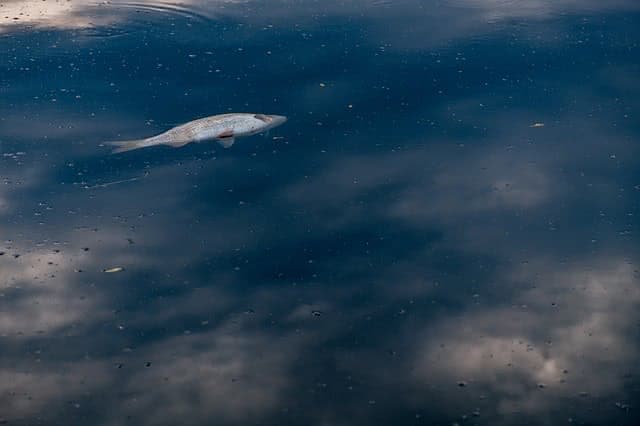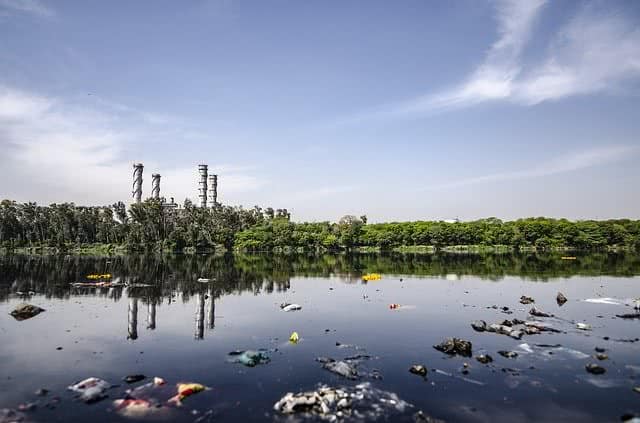An astounding amount of wastes enters the oceans every year which has increased over the past 60 years. Over 80% of the sources of marine pollution are due to land-based activities. Every day, government, big multinational companies or organizations are announcing or inventing some ways to tackle the problem which is mainly plastics. The oceans are cluttered with plastic, chemicals, oils and many more toxic chemicals. These pollutants are affecting the health and environment of marine animals as well as animals on the land.
Environmentalists have warned mankind about this situation long before and the way of the direction we are headed to. But humans are too dependent on the plastics, particle single-use ones. Apart from plastics, pesticides produced on the land also reach the waters in mainly two ways such as intentional dumping or runoffs. Let us have a detailed look at this article.

Different Types of Marine Pollution and Their Effects on Animals
Various types of pollutants are causing marine pollution and are putting the lives of many marine species in danger. Here are some of the causes and effects below:
Effects of the oil spill in the Ocean
A million gallons of oil are dumped into the ocean each year. There are also oil spills from drilling in the offshore areas that enter into the oceans due to runoff by the rivers and lakes. According to NOAA (National Oceanic and Atmospheric Administration), there are 4 major sources of oil spill enhancing marine pollution. They are:
- 37% of the oil leakage is caused due to oil consumption in the storage and production of industrial and municipal wastes, and runoff from the urban areas.
- 3% of the oil pollution is caused due to the extraction of oil in the offshore mines.
- The natural oil from the bottom of the sea beds enters the oceans and caused almost 45% of the pollution.
- 10% of marine pollution via oil is caused due to an accidental spill of oil by the ships.
Oil causes dangerous hazards to animals. All the fur-covered mammals or birds cannot move or fly freely to feed or maintain the body temperature properly if they are covered by oil. The oil from the ocean washes up the beaches which contaminate the feeding and nesting areas of the animals. When marine animals try to clean the oil from their body by licking, they ingest oil which can poison them.
Although deep-sea creatures are less affected by the oil spills, those who are living and swimming in the shallow areas will be vulnerable to suffocation and will ultimately result in their death.
Effects of Toxic Materials
Due to the water-soluble property, toxic materials often end up in the oceans or microlayer of the sea surface. According to a report by WWF (World Wide Fund for Nature), 8% of marine pollution is due to toxic materials that originate from the land. The sources of toxic materials include sewage discharge, radioactive wastes from the power plants, wastes of the industries, manure and fertilizer wastes, nuclear dumps from the submarines, and household regular cleaning products.
The toxic chemicals find their path and sink to the bottom of the oceans. Smaller fish ingest these hazardous chemicals and toxic materials enter into the food chain. The humans consume the contaminated fish which is then stored inside the tissues and leads to diseases like cancer, cardiovascular diseases, reproductive disorders, Alzheimer’s, birth defects and many other long term health-related problems.

The National Resources Defense Council has announced a list of fish with high PCB and mercury content. Phosphorus and nitrogen from fertilizers, household wastes, and sewage increases the level of nitrogen and reduces the oxygen level in the ocean, thus causing dead zones in the seas.
Plastic Trash and Other Garbage
Different types of products made of plastic bags, soda cans, medical wastes, milk cartons, and other garages enter the ocean. These items are light and do not lowers down in the water. Later, this debris washes on the beaches and create health hazards. Many aquatic animals get entangled in the old plastic fishing nets and die due to choking and suffocation. Microbeads of plastic are consumed by the turtles, fish, and birds that clogged their digestive system. Due to the blocked digestive system, they suffer and die a painful death.
Sea turtles consume plastic bags as they think of them as jellyfish which is their food. Various forms of plastics are the causes of starvation, entanglement, strangulation, and drowning of different marine lives. In 2017, there are more than 5.25 trillion plastics in the oceans and 8 million tons of debris is added every year.
Some facts about the Effects of Marine Pollution on the Animals
Below are some of the common facts about the hazardous effects of marine pollution on aquatic life. They are:
- In 2015, a scientific review team announces that 92% of the debris consumed by marine animals is made up of plastics.
- The lives of 17% of the rare species on the IUCN red list are in danger due to marine pollution.
- 55 to 56% of the debris found inside the aquatic animals is man-made.
- In 2017, according to a report by Scientific Review, 100% marine turtles, 59% whales, 59% seabirds, and 265 of seals consume plastic that leads to stomach problems, starvation and even death of the species.
- Entanglement in marine wastages has caused the injury, movement restriction, and starvation to more than 344 species.
- In 2010, the oil spill by British Petroleum in the Gulf of Mexico has contributed to the death of 279 sea turtles, 658 sea birds, countless number of fish and 36 aquatic mammals.
An innumerable number of animals both on land and ocean are affected every year due to marine pollution. We all should remember that oceans play an important role in the environment and ecosystem. So it is imperative to protect the ocean to maintain marine health.